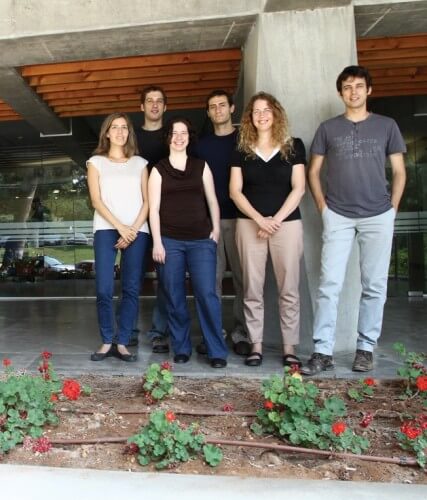You can think of the electron as a table tennis ball inside an ice cream cone. When the system is stable, the table tennis ball has no apparent "reason" to rise, leave the cup and tour the outside world. But, it turns out, in certain situations the electron may (with low probability) leak out and "pass through the wall" blocking it.

In London, runners from all over the world competed recently, with the aim of showing everyone who among them is the fastest in the world in their field. But the really fast measurements are carried out in a small laboratory, at the end of a corridor on the bottom floor of the physics building at the Weizmann Institute of Science - the laboratory of Dr. Nirit Dudovitz. In a recent experiment, the findings of which were published in the scientific journal Nature, Dr. Dudovitz was able to measure the amount of time required for an electron to "flow" and "escape for a moment" from where it was.
You can think of the electron as a table tennis ball inside an ice cream cone. When the system is stable, the table tennis ball has no apparent "reason" to rise, leave the cup and tour the outside world. But, it turns out, in certain situations the electron may (with low probability) leak out and "pass through the wall" blocking it. This "leakage" is a quantum phenomenon called tunneling, which arises from the wave nature of the particles. This is one of the basic phenomena in quantum theory, and it has challenged the imagination of physicists for decades, mainly because it has no parallel example in the "normal" world.
Quantum tunneling appears in a wide variety of phenomena in nature. Dr. Dudovitz investigates a certain type of tunneling, which occurs as a result of the activation of a strong laser field. The laser field "helps" the electron a little: it "bends" the edge of the cup for it, so that it will be easier for it to flow out by way of tunneling. The bending takes place in an extremely narrow window of opportunity, which lasts only about 200 attoseconds (the time when the light wave is at its peak). An atto-second is a billionth of a billionth of a second. Because the window of opportunity is so short, scientists have not been able, until now, to measure the time of occurrence of the phenomenon directly.
In fact, the electrons don't just aspire to rest; They are also quite loyal, so that after a "trip" outside the material from which they came, they tend to return "home". When such an electron returns and is absorbed by its parent material, it causes the emission of a photon. This photon can be absorbed and measured. Such measurements allowed Dr. Dudovitz to follow the electrons flowing in the time dimension.
This measurement was based on the fact that the "flying" electrons return to their home base, after the "trip", in a straight line. Thus, if the starting material is slightly deflected (for example, by means of an additional laser field), it is possible to cause the electron returning in a straight line to not find its base in its place. In such a case, since the electron is not absorbed in the material - no photon will be emitted. This is how the time of the electron's "leakage" is recorded, and the time difference is measured until the emission of the photon (indicating its return to the starting material).
But not all electrons are equal. Electrons with different energies will "flow" from the "rim of the cup" at different times. Dr. Dudovitz asked to know exactly how long this difference manifests itself. To do this, she made further use of the phenomenon of the parallel existence of particles, as waves. When the trickling electrons return to their "base", their wave forms collide with each other. When the interference destroys, there is, in fact, a subtraction of one wave from another. The result in this case expresses the time difference between their different departure times. Dr. Dudovitz was able to measure this difference, which was about 50 atto-seconds. As far as is known, this is one of the shortest periods of time ever measured.
This research provides a deeper look into the world of atomic physics, and sheds new light on various basic phenomena. The new knowledge that emerges from it may serve as a basis for powerful future technologies.
